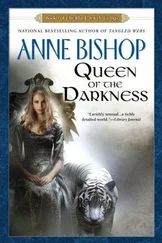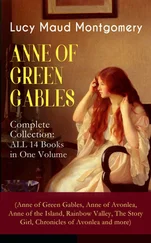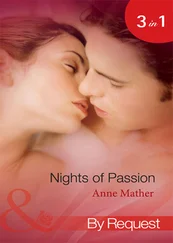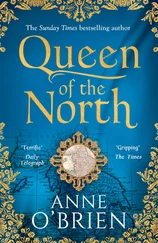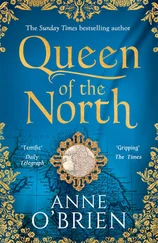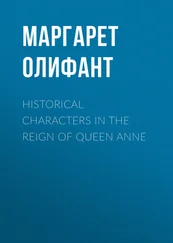The main emphasis in her education was on acquiring feminine accomplishments. Mrs Henrietta Bannister taught her music, for which Anne’s ‘ear was very exquisite’. Anne also received guitar lessons from Henry Delauney, who was paid £50 a year. Strumming on the guitar was currently a fashionable accomplishment for ladies, and Anne’s father ‘played passably’ on the instrument. 49
Dancing lessons were another important part of the curriculum. The Duchess of Marlborough would grudgingly concede that in her youth Anne had ‘a person and appearance not at all ungraceful’, and until she became physically incapable of doing the steps, Anne derived intense pleasure from dancing. In 1686, when the dissenter Roger Morrice noted in his journal that Anne had recently performed at a court ball, he added disapprovingly ‘as she does constantly’. Within a few years her burgeoning weight and attacks of lameness made dancing difficult. Nevertheless in 1691 she was reported to have taken to the floor during her birthday celebrations, and even in 1696 she managed to dance at a party for her brother-in-law. That was almost certainly the last time she was able to do so, and long before she became Queen dancing had ceased to be an option. 50
Anne’s dancing master was a Frenchman called Mr Gory. He instructed her in the latest Continental dances, but she did not despise native traditions, patriotically maintaining that some English country dances were ‘much finer’ than those imported from France. Years later, she would engage Mr Gory, by then old and rich, to teach dancing to her son, William, Duke of Gloucester. Unfortunately the little boy was badly coordinated, and so hated his lessons that he called Mr Gory ‘“Old Dog” for straining his joints a little’. 51
Anne and Mary were taught drawing by the dwarf artist Richard Gibson, with Mary outshining Anne in this and in needlework. Outdoor activities appealed more to Anne and by her teens she was a keen horse-woman, enjoying riding and hunting. She was also introduced to more frivolous recreations at an early age. Roger Morrice noted that Mary’s tastes had been shaped by what he termed ‘the prejudices of her education, which induced her to spend her time as other courtiers did in cards, dice, dances, plays and masques’. Anne liked all these pastimes as much as her sister. Card games such as basset played for high stakes were very much a feature of court life, and by the time Anne was fifteen she was a regular player at the tables. 52
Anne’s father would later advise that ‘young persons … should not … read romances, more especially the woman kind; ’tis but loss of time and is apt to put foolish and ridiculous thoughts into their head’. It is not clear whether he managed to stop his daughters reading novels, but they certainly derived literary pleasure from plays. In 1679 fourteen-year-old Anne reported that she was planning to watch a rehearsal of an amateur production of George Etherege’s cynical and immoral comedy The Man of Mode, and it is obvious that she already knew the piece well. She was displeased by the casting of one female role, writing scathingly ‘Mrs Watts is to be Lady Townley, which part I believe won’t much become her’. Some years before that, her imagination had been captured by another drama, Nathaniel Lee’s Mithridates, which exerted a fascination on her for a long time. The play was a perennial ‘favourite of the tender hearted ladies’, and was a tale of sibling rivalry, tragic love, and court intrigue. Anne’s favourite character was the hero, Ziphares. This princely youth refuses to forsake his true love Semandra, while remaining loyal to his father, the eastern potentate Mithridates, who has designs on the girl himself. In 1681 Anne appeared in an amateur production of Mithridates put on at Holyrood House when her father was in exile in Scotland. James watched her proudly, fortunately unaware that Mithridates’s fall at the end of the play foreshadowed his own. After remarking ‘How swiftly fate can make or unmake kings’, one character laments in the final scene,
Where now are all the busy officers
The supple courtiers and big men of war,
That bustled here and made a little world?
Revolted all.
For James these lines would prove all too apposite. 53
The Duchess of Marlborough, who would be the recipient of a vast amount of correspondence from Anne, declared ‘Her letters were very indifferent, both in sense and spelling’. 54The accusation of poor spelling was unfair given the standards of the day. Anne spelt better than many aristocratic ladies at the Stuart court and, for that matter, than Sarah’s husband, the Duke of Marlborough.
According to an early historian of Anne’s reign, ‘it was an unhappiness to this Queen that she was not much acquainted with our English history and the reigns and actions of her predecessors’. Despite ‘beginning to apply herself to it’ shortly before her accession, it proved too late to fill up all the gaps in her knowledge. She had nevertheless managed to learn enough about the Tudors to identify parallels between herself and Queen Elizabeth I. Some of the events of the recent Civil War were also familiar to her, although inevitably she viewed these from a royalist standpoint. The executed Charles I was now revered as a martyr who had died defending the Church of England. The anniversary of his death was observed by a ‘day of fast and humiliation’, and on that date Anne and her sister wore black. Church services were held to commemorate his murder, during which the congregation was reminded that ‘upon no pretext whatever, subjects might resist their lawful princes’. There was little recognition that Parliament had had some legitimate grievances, and that this had contributed to the outbreak of civil war. 55
The sufferings of the Church of England in the decade after the royalist cause collapsed were also much emphasised. Under the Commonwealth, the Book of Common Prayer had been outlawed, episcopacy had been abolished, and hundreds of Anglican clergymen had been deprived of their livings. At the Restoration of the monarchy, the reinstated bishops took revenge on their former oppressors. All those Protestants who could not comply with every tenet of the newly resurgent Church were penalised, and ‘rigid prelates … made it a matter of conscience to give … the least indulgence’ to dissenters. 56By the terms of the Conventicle Act, those who worshipped in a manner not authorised by the state were liable to savage fines and imprisonment.
For much of Charles II’s reign, the tribulations of nonconformists far exceeded those imposed on Anglicans during the Interregnum, but Anne was brought up to have little sympathy for this sizeable minority. She accepted that dissenters posed a serious threat to the well-being of the Church of England, and the fact that nonconformity was associated in the mind of the court with political radicalism further predisposed her against them. Her upbringing helped shape her conservative outlook: Sarah Marlborough would claim Anne ‘sucked in with her milk’ a distaste for those who upheld the liberties of the subject, while the Roundheads who had executed her grandfather were viewed as little short of demonic. 57
There can be no doubt that had Anne been a boy she would have been taught very differently. The rigorous scholastic programme designed for her son William, Duke of Gloucester at the end of the seventeenth century shows what then comprised a princely education. Whether such a training, with its heavy emphasis on classical languages, would have made Anne a better ruler remains conjectural. As it was, she ascended the throne in what the Duchess of Marlborough scoffingly called ‘a state of helpless ignorance’. 58Nevertheless, she never seems to have doubted her ability to take on the responsibilities of sovereignty.
Читать дальше


